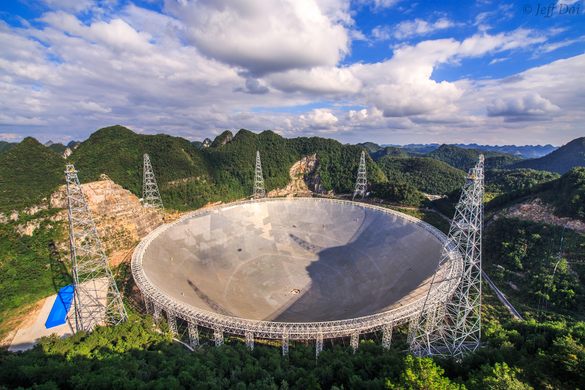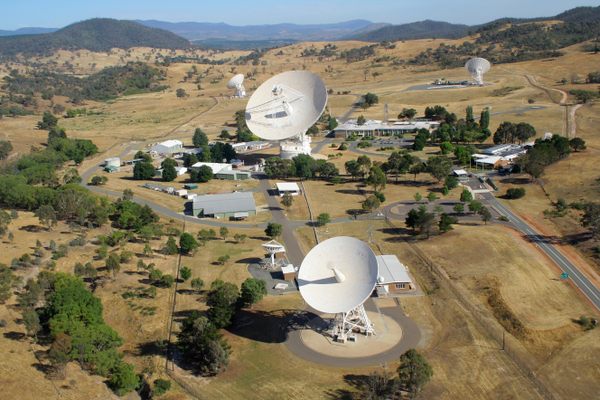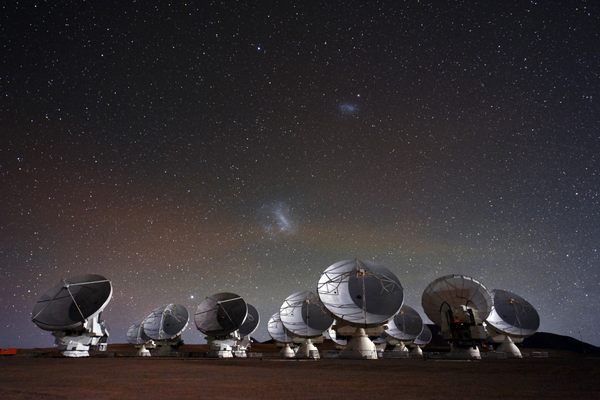AO Edited
The Eye of Heaven
The largest radio telescope in the world searches for extraterrestrial life from the remote limestone peaks of southern China.
Nestled in a natural valley among the remote limestone peaks of southern China’s Guizhou Province, the Five-hundred-meter Aperture Spherical radio Telescope (FAST, for short) receiver is the largest radio telescope in the world, dwarfing Russia’s RATAN-600 or Puerto Rico’s Arecibo Observatory.
Also known by the more literary moniker “The Eye of Heaven,” this enormous dish was completed in 2016 to peer into distant celestial bodies billions of lightyears away. Its mission includes probing the remote parts of the universe to listen for signals of alien life, furthering our understanding of dark matter, and helping to map the Milky Way galaxy.
The telescope’s sheer size defies photographic expectations: You could easily fit 30 football fields or a Ford Class aircraft carrier within its yawning circumference. The seemingly solid disk is actually composed of 4,450 triangular aluminum panels mounted on hidden winches and cables that can deform to focus on different sky locations. The movable “eye” part of the telescope hangs overhead on cables like an NFL camera and can zoom around the dish, aiming at different dish angles like an iris darting across peripheral views through a contact lens.
The construction of the FAST telescope represents a cutting-edge astronomical opportunity for China but also reveals some of the harsh tendencies and limitations of the central government. According to the state-run Xinhua News Agency, 9,110 local residents were relocated in order to create a three-mile quiet zone around the FAST telescope. Xinhua writes that the relocated villagers now “enjoy better living standards,” and admire their luck. Agence France-Presse has challenged this account with charges of “land grabs without compensation, forced demolitions and unlawful detentions.”
The remoteness has done little to deter the crowds of tourists who come to peer into the Eye of Heaven and snap selfies with its shiny disk. Dozens of new hotels, restaurants, and even a theme park have sprouted up to serve the demand, but they might end up producing the very light and RF pollution that could interfere with telescope observation.
Plan Your Trip
The Atlas Obscura Podcast is Back!

























Follow us on Twitter to get the latest on the world's hidden wonders.
Like us on Facebook to get the latest on the world's hidden wonders.
Follow us on Twitter Like us on Facebook